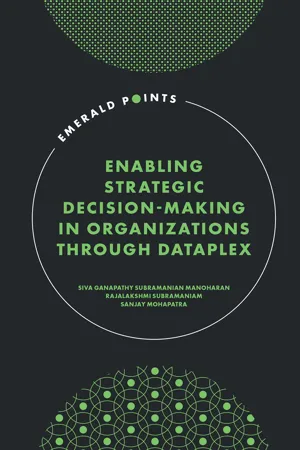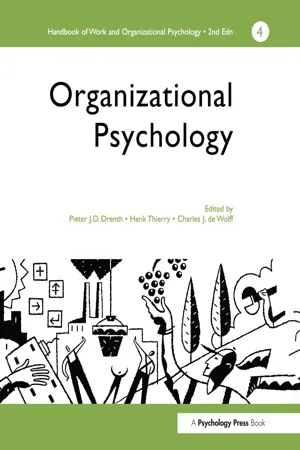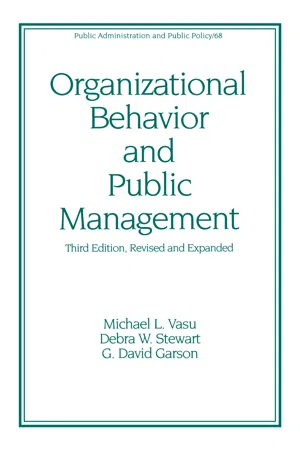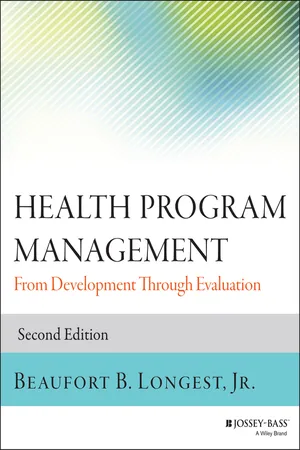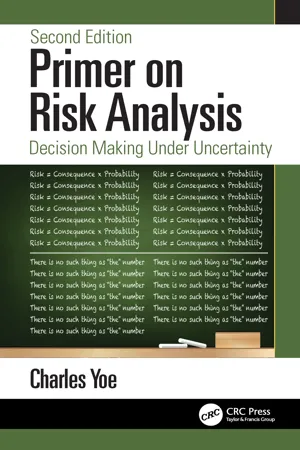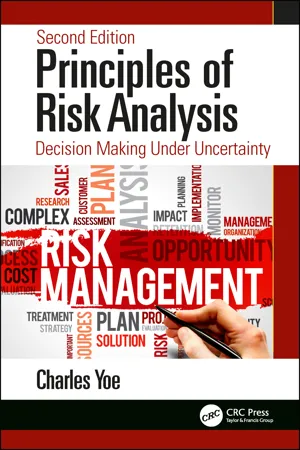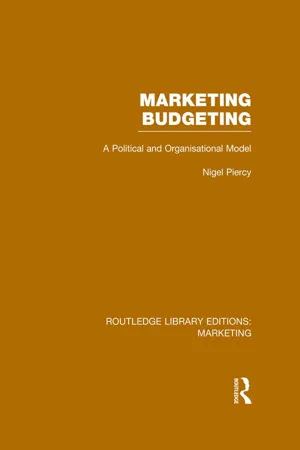Business
Decision Making Model
A decision-making model in business refers to a structured approach used to make choices and solve problems. It typically involves identifying the decision to be made, gathering relevant information, evaluating alternatives, making a decision, and implementing and monitoring the decision's outcomes. This systematic process helps businesses make informed and effective decisions.
Written by Perlego with AI-assistance
Related key terms
Related key terms
1 of 4
Related key terms
1 of 3
11 Key excerpts on "Decision Making Model"
- Siva Ganapathy, Subramanian Manoharan, Rajalakshmi Subramaniam, Sanjay Mohapatra(Authors)
- 2023(Publication Date)
- Emerald Publishing Limited(Publisher)
Panpatte and Takale (2019) say that the utilization of knowledge, skills, time, and prior experience is required during the decision-making process. The thought process is critical in this technique. Decisions are important because they govern organizational and managerial action. Each management level makes decisions in order to ensure that the organization’s or company’s objectives are fulfilled. Every organization must make successful decisions at some time as part of the managerial process. The organization chose to simplify the procedure. Most management choices are influenced by internal and external environmental restrictions. Management choices are made in chaotic and dangerous conditions since the environment is always changing and information is not always accurate and easily available.Decisions taken in unexpected and dangerous conditions describe complex, unstructured, and unplanned scenarios (Dragomir, 2012; Rutherford-Silvers, 2007; Ştefănescu, 2013). Management decision-making has evolved over the decades as a consequence of additions to the literature from theorists and practitioners, as well as a lack of difficulties encountered. Decision models are important in achieving organizational goals in a complex and dynamic environment where leaders must make judgments and adjust swiftly. The success or failure of committees is determined by the speed and consistency with which decisions are made.Consider the difficulties you have in making independent decisions in your own life. As a result, we can see how tough and critical business decisions may be when the stakes are too high and the repercussions are terrible (Greenberg, 2011). The fundamental essence of decision-making is the same in both circumstances. The process of selecting an option from a group of choices is referred to as decision-making (March, 2010).Management theorists consider decision-making as one of the most important managerial activities (Drucker, 2010; Mintzberg, 2008). The greatest business decisions are not just made by managers, but by all employees, at all levels.- eBook - ePub
A Handbook of Work and Organizational Psychology
Volume 4: Organizational Psychology
- De Charles, P J D Drenth, THIERRY HENK(Authors)
- 2013(Publication Date)
- Psychology Press(Publisher)
process rationality, or the order in which certain aspects are completed during the decision-making process (e.g. diagnosis, search, choice, implementation). They also pay attention to how logical aspects and political aspects are interwoven in a single project. The number of interruptions, such as delays and feedback cycles to earlier phases, are another important factor.Next, the context in which decision-making takes place is discussed. The context largely determines the degrees of freedom management has in organizing and steering the decision-making process. Determining factors, in addition to the topic itself, are the nature of the organization and of the environment. What limitations do existing rules impose? If the environment becomes more threatening, what implications does it have for decision-making? Under what circumstances is “no-nonsense management” possible?After this analysis at the organizational level we turn to the individual manager and his role as decision-maker. Here we go into questions such as: What characterises the work of a manager? What makes a topic become a problem? What factors give a problem so much priority that it is tackled? When is it important, when is it possible to decide quickly; when is it better or necessary to take more time? What repercussions do decisions have for a manager’s “track record” and thus for his career chances? How can the manager limit his risks and strengthen his image as a successful manager? There are widely divergent opinions on the meaning of complex processes. The same may be said of the role played by individuals in such processes. Active “management of meaning” therefore often brings up the rear in a decision-making process.In conclusion, the more concrete tools of management are discussed. What instruments are available for complex decision-making? What experience has been acquired with them? What instruments are useful under what circumstances? What limitations must be reckoned with?2 Views of Decision-Making
2.1 The classical or rational model
The classical or rational model is normative in nature; it prescribes the ideal way of acting in decision-making situations. It offers a basis for quantitative disciplines such as econometrics and statistics. It assumes that the decision-maker strives for a decision with a maximum yield. It also makes the rather simplistic assumption that the decision-maker is aware of all alternatives and their possible consequences, at least the short-term ones (see Figure 14.1 - Hedley Smyth(Author)
- 2014(Publication Date)
- Routledge(Publisher)
Project Business and Project Decision-MakingIntroduction
One particular type of organizational behaviour is decision-making. Decisions are the means to translate ideas and directions into applied processes and actions. Decisions aim to improve performance from the strategic board level down to operational levels. Decisions are therefore part of the formal routines of systems and procedures. They are taken using available information and as events unfold, driven by both management needs and operational timeframes. As such, they are known to be needed, planned in advance, made and then implemented. Yet, manifested risks and emergent requirements are unknown in advance, decisions needing to be taken in reaction to events in which emergent problems are embedded.Decision-makers are managers. They may act as autonomous agents or in groups within complex organizational systems and sets of procedures. Meetings are frequently forum for decision-making. Some decisions are primarily strategic, others tactical with strategic implications, for example project feedback loops to reproduce and enhance strategy and system design. Other decisions are tactical and operational, while many are linked to issues of accountability, legitimacy of the project, and the balance of power, legal and institutional requirements. Each has an important role, but the combined effect can be to shift the project management horizon away from the main purposes of delivering project benefits within time–cost–quality/scope towards the management means rather than the end.- eBook - ePub
The Psychology of Behaviour at Work
The Individual in the Organization
- Adrian Furnham(Author)
- 2012(Publication Date)
- Psychology Press(Publisher)
11 Decision-makingIntroductionDecision-making is arguably the most important of all managerial activities. It is the most common activity and most crucial role of senior managers. It is about how managers process information. Essentially, decision-making is concerned with the processing of generating options and then choosing among them. Decisions in organizations can be divided into various groups, and each decision has various phases. For instance:• operational decisions: usually with short-term effects and of a routine nature;• tactical decisions: usually with medium-term effects and of a non-routine nature but not going so far as to review the organization’s goals;Decision-making is particularly interesting because it brings together so many different strands of psychology: cognitive, personality and social.• strategic decisions: usually with long-term effects and concerning the organization’s goals.Research on decision-making is concerned with very specific issues, such as how people infer information from data, how personal preferences affect decision-making and the deciding process itself. As Connolly and Ordonez (2004) note, this area is both descriptive and prescriptive: it seeks to ascertain what people actually do and what they should do in the decision-making process. They note that decision-making is at the heart of so much in work psychology: personnel selection and placement, strategic and resource planning, appraisal and assessment. People in business all want to make better decisions. Most of the decisions senior managers have to make are complex. These decisions are often made in groups. They often have very serious consequences.For all sorts of reasons, people think in automatic ways that lead to poorer judgements (Hastie & Dawes, 2001). In essence, people are frequently not rational. Hastie and Dawes (2001) note that a rational choice can be defined as one that meets four criteria: - Michael L. Vasu, Debra W. Stewart, G. David Garson(Authors)
- 2017(Publication Date)
- Routledge(Publisher)
Administrative Behavior (1945). A third section of the present chapter treats this viewpoint which, for a time, seemed to emerge as a preferable alternative to rational or incremental models of planning and decision-making. Participatory approaches to decision-making are discussed in a fourth section (and discussed at length in the next chapter). The focus in this section is on the empirical studies of individual and group decision-making. The chapter closes with a general discussion of the managerial implications of decision-making theory for the practicing public administrator.Planning and Rational Models of Decision-Making
When students think of decision-making, they often assume a rational model; that is, a model in which there is a clear relationship between ends and means. This model takes on a number of forms the essential features are: (1) Identify objectives; (2) identify alternative courses of action for achieving those objectives; (3) predict and evaluate the possible consequences of each alternative; and (4) select the alternative that maximizes the attainment of the objectives. This so called “rational decision-making model” always begins with a statement of the goals or objectives to be achieved. Obstacles to the achievement of objectives are inventoried. For each obstacle, alternative solutions are surveyed and the optimal one is selected. Solutions are spelled out into task matrices which relate resources (personnel, materials) to these tasks. Tasks are assembled into a rational, sequential plan through a process, like program evaluation and review techniques (PERT) or other planning processes. Later, costs and benefits are tracked through program budgeting as a database for evaluation and possible revision of the plan selected.This vision of “rational planning” was at its peak in the United States in the 1930s and 1940s. A symbol of this vision was the National Resources Planning Board, directed by Charles Merriam, a leading political scientist of the 1930s. Political scientists of that era had begun to condemn the “ramshackle character of our national legislative machine,” as Edwin Corwin put it in his 1931 presidential address to the American Political Science Association (APSA) (Corwin, 1932). Corwin called on political scientists to put aside questions of power and influence and instead concentrate on issues of management and planning.- eBook - ePub
Health Program Management
From Development Through Evaluation
- Beaufort B. Longest(Author)
- 2014(Publication Date)
- Jossey-Bass(Publisher)
In the designing activity, managers make myriad decisions as they establish the initial organization design and logic model of a program and subsequently reshape them as circumstances change. They must decide both what resources are needed and how to acquire them. They must decide what work processes will be used to achieve the desired results established through developing/strategizing. Other decisions are required when managers establish the intentional patterns of relationships among human and other resources within a program as they shape the program's organization design, the creation of which then stimulates other decisions in regard to staffing. In leading, managers must decide how to encourage other participants in a program to contribute to accomplishing the program's mission and objectives, and they must decide how to facilitate those contributions. Managers decide what means of influencing other participants will work effectively, and how they will be applied. As leaders, managers focus on the various decisions that affect the entire undertaking, including those intended to ensure the program's survival and overall well-being. Because leading effectively means motivating participants to contribute to the program's performance, managers must decide how to motivate diverse participants, each of whom has a unique set of needs that can be partially met in the workplace. Indeed, how managers conduct their decision making has a great deal to do with success in all the other activities of management work. We will begin our consideration of decision making with a definition. Decision Making Defined At its most basic level, decision making is simply making a choice between two or more alternatives (Adair 2013; McLaughlin and Olson 2012). Thinking of decision making in this way focuses attention on its essential element: making a choice. However, decision making by managers involves a process with a series of steps, which is described in detail in this chapter - eBook - ePub
Decision Making Under Risk in Organisations
The Case of German Waste Management
- Eckard Kamper(Author)
- 2018(Publication Date)
- Routledge(Publisher)
The emergence of a specific sociological approach to problems of decision making can best be traced by examining the development of the behavioural theory of decision making, a branch of theory that is mainly connected with the names of Herbert Simon and James March (Simon 1957; March and Simon 1958; cf. Berger/Bernhard-Mehlich 1993). The key terms that characterise the development of the behavioural theory of decision making are bounded rationality (1.2.1), ambiguity (1.2.2), and decision making as rule following (1.2.3). This step-by-step rejection of the economic theory of decision making will be analysed in the following sections.1.2.1 Bounded Rationality
The first important modification of the pure economic approach is the concept of bounded rationality. Exactly what this concept implies can be exemplified by the basic decision situation as sketched above. In contrast to a model of perfect rationality, the notion of bounded rationality introduces several limitations to a rational choice within this model. Firstly, the decision maker cannot know all possible alternatives that an external observer might identify for instance. Second, the decision maker has incomplete knowledge with respect to the consequences of each alternative. Third, it is very difficult to evaluate future events correctly, even if one has a consistent preference function.These cognitive limitations in the process of decision making lead to the phenomenon that, in general, satisfactory instead of optimal decisions are made. This means that not all possible alternatives are examined, but only the first one that promises satisfactory results according to the underlying preferences.For the central research question, the degree of rationality that is achieved by the decision, this means the following. Although an external observer might judge the behaviour of the decision maker as slightly irrational, the decision maker in his specific context at least intends to act rationally (March/Simon 1958; Smelser 1992: 388). If one takes into account the idiosyncratic conditions of the decision situation (complexity of the environment, structure of the organisation), one might even state that the decision maker achieves the highest degree of rationality possible under the given circumstances. Therefore, for the analysis of rationality in decision making behaviour, it is necessary to analyse the structural context in which the decision takes place. - eBook - ePub
Primer on Risk Analysis
Decision Making Under Uncertainty
- Charles Yoe(Author)
- 2019(Publication Date)
- CRC Press(Publisher)
This chapter begins by considering the use of several decision-making strategies. The notion of risk analysis as evidence-based decision making is revisited in order to address one of the more perplexing paradoxes of decision making under uncertainty: how much evidence is enough to make a decision?; or, stated differently, how much uncertainty can a decision maker accept? Residual uncertainty is introduced as a formal topic to be considered by decision makers and to be communicated to decision makers. The chapter then turns its attention to offering a practical approach for decision makers who must decide under uncertainty. Finally, some more conventional approaches to decision making under uncertainty are presented before it concludes.7.2Decision-making strategiesHeuristics and bias research is usually said to have begun in the 1970s with the work of Tversky and Kahneman (1974). The research originally focused on the field of prediction under uncertainty and the estimation of probabilities and frequencies (Keren and Teigen, 2004). It did not take long for the research to be generalized to the whole area of judgment and decision making. Figure 7.1 presents the central elements of a decision process. There are the characteristics of the decision problem, which can be divided into the complexity of the decision task and the complexity of the decision context, the decision maker’s goals and preferences, the decision strategy used, and the decision that is made.Figure 7.1 Central elements of a decision-making process. (Adapted from Pfeiffer, J. 2012. Interactive Decision Aids in e-Commerce . Contributions to Management Science, DOI 10.1007/978-3-7908-2769-9 2, Berlin Heidelberg: Springer-Verlag.)The complexity of the decision task refers to the number of alternatives from which to choose and the number of attributes upon which to judge. The complexity of the decision context is affected by such things as the nature of the trade-offs entailed among the alternatives, the range of attribute metrics (alternatives with more similar metrics tend to be more difficult for decision makers to differentiate), and the quality of the alternatives and their similarities or differences.The decision maker’s goals can include such things as maximizing the accuracy of a decision, minimizing the cognitive effort required for the decision, minimizing the negative emotions experienced while deciding, and maximizing the ease of justifying a decision (Bettman, Luce, and Payne, 1998). The decision maker’s preferences are important for determining attribute importance or weights, aspirational levels, that is, cutoff-values that identify thresholds or acceptable levels of an attribute, and value functions. - eBook - ePub
Principles of Risk Analysis
Decision Making Under Uncertainty
- Charles Yoe(Author)
- 2019(Publication Date)
- CRC Press(Publisher)
This chapter begins by considering the use of several decision-making strategies. The notion of risk analysis as evidence-based decision making is revisited in order to address one of the more perplexing paradoxes of decision making under uncertainty: how much evidence is enough to make a decision?; or, stated differently, how much uncertainty can a decision maker accept? Residual uncertainty is introduced as a formal topic to be considered by decision-makers and to be communicated to decision makers. The chapter then turns its attention to offering a practical approach for decision makers who must decide under uncertainty. Finally, some more conventional approaches to decision making under uncertainty are presented before it concludes.19.2Decision-Making StrategiesHeuristics and bias research is usually said to have begun in the 1970s with the work of Tversky and Kahneman (1974). The research originally focused on the field of prediction under uncertainty and the estimation of probabilities and frequencies (Keren and Teigen, 2004), consequently, those heuristics were introduced in Chapter 14 . It did not take long for the research to be generalized to the whole area of judgment and decision making. This is why the idea is revisited again here.Figure 19.1 presents the central elements of a decision process. There are the characteristics of the decision problem, which can be divided into the complexity of the decision task and the complexity of the decision context, the decision maker’s goals and preferences, the decision strategy used, and the decision that is made.Figure 19.1 Central elements of a decision-making process. (Adapted from Pfeiffer, 2012.)The complexity of the decision task refers to the number of alternatives from which to choose and the number of attributes upon which to judge. The complexity of the decision context is affected by such things as the nature of the trade-offs among the alternatives, the range of attribute metrics (alternatives with more similar metrics tend to be more difficult for decision makers to differentiate), the quality of the alternatives, and their similarities or differences.The decision maker’s goals can include such things as maximizing the accuracy of a decision, minimizing the cognitive effort required for the decision, minimizing the negative emotions experienced while deciding, and maximizing the ease of justifying a decision (Bettman et al., 1998). The decision maker’s preferences are important for determining attribute importance or weights, aspirational levels, that is, cutoff-values that identify thresholds or acceptable levels of an attribute, and value functions. - eBook - ePub
Marketing Budgeting (RLE Marketing)
A Political and Organisational Model
- Nigel Piercy(Author)
- 2014(Publication Date)
- Routledge(Publisher)
In bureaucratic organizations, changes in resource allocation patterns should either follow a proportional basis, be based on some standard measure of operations and performance, or reflect an attempt to shift the resources to better achieve the goals and values of the organization. By contrast, political models of organizations would suggest that power would best predict changes and shifts in decisions and allocations. (Pfeffer, 1981)Decision Process Models
The approaches characterised as decision process models assume less rationality and greater randomness than the bureaucratic theories – the assumption of pre-defined, known preferences is dropped. Such models suggest that: there are no overall organisational goals to be maximised by choice – or even that choices made may determine goals since the meaning of action is retrospective (Weick, 1969); and that there are no powerful interests with preferences and the resources to obtain them.For example, the ‘garbage can model’ (Cohen et al , 1972) suggests that ‘a decision is an outcome of an interpretation of several relatively independent “streams” within an organization’ (Cohen et al , 1972) and it was concluded that:although the processes within the garbage can are understandable and in some ways predictable, events are not dominated by intention. The processes and the outcomes are likely to appear to have no close relation with the explicit intention of actors. In situations in which load is heavy and the structure is relatively unsegmented, intention is lost in context dependent flows of problems, solutions, people, and choice opportunities. (Cohen et al , 1976)Pfeffer (1981) suggests the key distinguishing characteristic of such models is the lack of intention – whether rational, bureaucratic or political in derivation.Political Models of Decision Making
Finally, political concepts of organisational choice arise out of the pluralistic, coalitional view of organisations associated with March (1962) and Cyert and March (1963). Such approaches are characterised by: the lack of control devices that enforce a coherent and unified set of goals and definition of technology;conflict existing between interests, sub-units and sub-cultures in the organisation; action resulting from bargaining and compromise; and when preferences conflict the distribution of power determining the outcome of the decison process. - eBook - ePub
Media Management in the Age of Giants
Business Dynamics of Journalism, Second Edition.
- Dennis F. Herrick(Author)
- 2012(Publication Date)
- University of New Mexico Press(Publisher)
No decision has really been made until someone is assigned to implement it. And no decision is final until it has been put into place and then reevaluated for effectiveness and possible change. Murphy’s Law, and our own personal experiences, alert us that rarely, if ever, will every detail go according to plan. You should assume that as a given and not be concerned when you find you need to fine-tune a decision down the road—or even change course.Therefore, once you have made a decision, you must commit to putting it into action. Otherwise, you have only a good intention—and we all know what the road to hell is paved with. Remember, there are only two resources available to a business to implement a decision: time and money. Every decision must be accompanied with a detailed plan of action on the exact commitment of these resources.6. Monitor the solution. After the decision is implemented, it needs to be monitored so adjustments—or perhaps an entirely different solution—can be made in a timely and effective way.Monitoring the solution is an important, and often neglected, part of the decision-making process. Too often a solution is implemented with grandiose assumptions. If the solution is not working, then selection of a new alternative is required.Risk taking in the decision process
You can’t win without taking some risks. Facing and handling risk is what gets the adrenaline going for the best managers and entrepreneurs, though that is exactly what unnerves lesser people.“Most of the significant decision-making in contemporary organizations is done under a state of uncertainty,” management professor Ricky W. Griffin warned. “Intuition, judgment and experience always play major roles in the decision-making process under conditions of uncertainty.”13No decision can be made without some chance of losing the resources of time and money committed to accomplishing the goal. The risk determines the importance of a decision. No organization would allocate a large percentage of its resources to an unimportant decision or project. Similarly, if the stakes are high, such as the survival of the organization, significant resources might be allocated in an all-or-nothing attempt to succeed. The greater the risk for the company, the more important is the decision. (Risk is a relative term, of course. Allocating $10 million and the time of a hundred employees would be an overwhelming proportion of resources for even a large television station, but it would be almost routine for the likes of Time Warner.)
Index pages curate the most relevant extracts from our library of academic textbooks. They’ve been created using an in-house natural language model (NLM), each adding context and meaning to key research topics.
Explore more topic indexes
Explore more topic indexes
1 of 6
Explore more topic indexes
1 of 4
